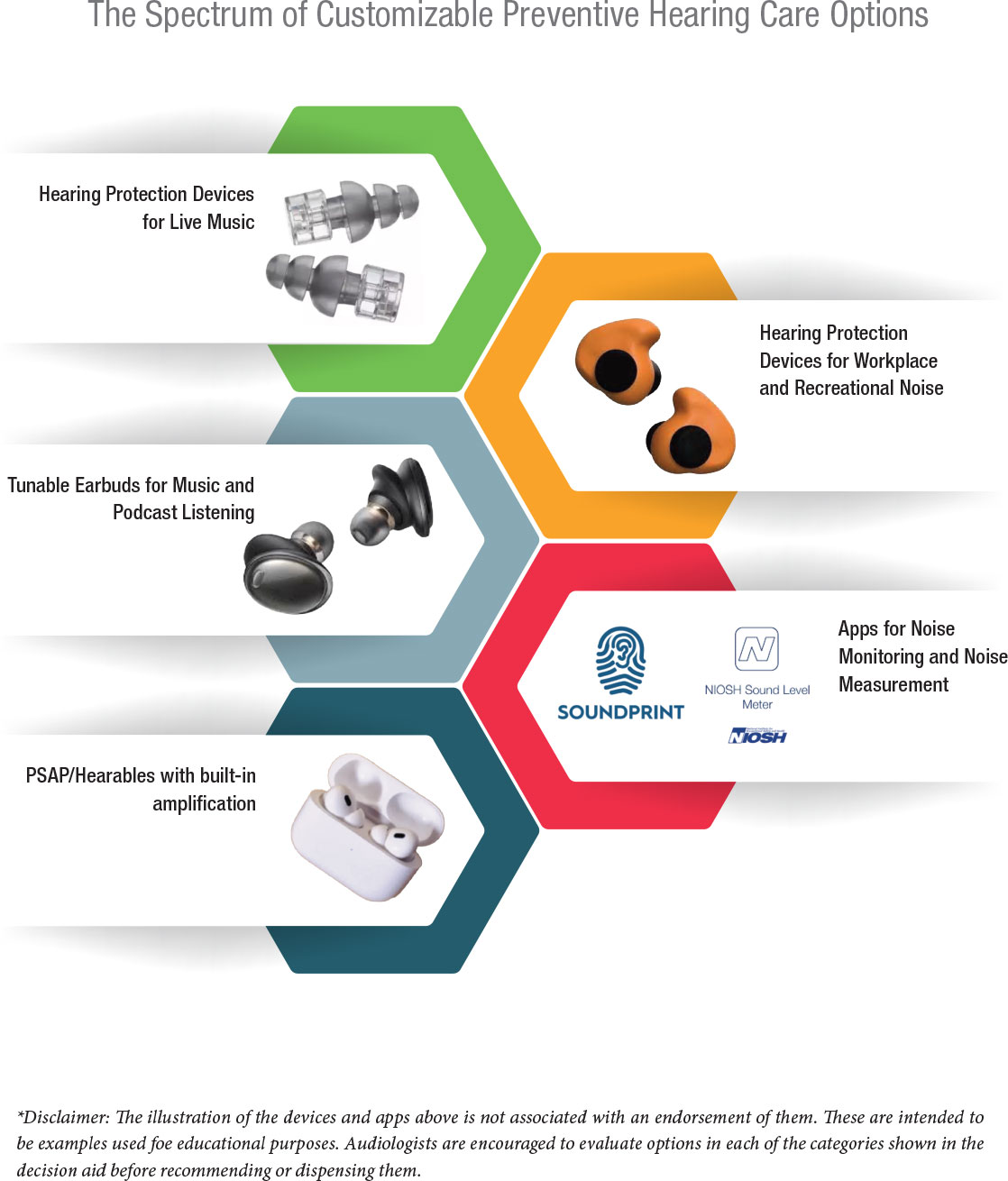
Promoting Healthy Hearing through the Lifespan with Decision Aids
Brian Taylor, Au.D.
Recent reports indicate that the onset of extended high frequency (EHF) hearing loss in healthy young adults is detected in their early 20s (Mishra et al., 2022). One report (Motlagh Zadeh et al. 2019) suggests that an astounding 64% of normalhearing adults between 18 and 65 years of age have EHF hearing loss. Even in the younger group (18–30 years) with normal hearing, 56% were found to have EHF loss. Additionally, a remarkable 64% of middle-aged individuals with EHF loss self-reported difficulty listening in background noise.
As any clinician can tell you hearing loss on the audiogram, even extended high frequency audiometry, rarely conducted in U.S. clinics, does not necessarily equate to functional communication deficits. For example, Mishra et al. (2022) determined that approximately 20% of younger adults, aged 19 to 38 years, had EHF hearing loss but only 7% of this group with EHF hearing loss reported difficulty hearing in noise, when a single question was asked: “Do you have listening in noise difficulty? Other reports suggest that percentage might be slightly higher. Not long ago, Spankovich et al (2017) reported that 12%, and Tremblay et al (2015) stated 15% of adults, spanning an age range from 18 to over 70, have normal routine audiograms but express self-reported hearing difficulties.
Although there is often a disconnect between the audiogram results and self-reported hearing difficulties, these reports suggest than around 10% of younger and middle-aged adults could benefit from improved hearing. Surprisingly, this is roughly the same percentage of adults with hearing loss who could benefit from hearing aids – and represents a population underserved by audiology. Further, given the large number of wireless earbud wearers, who tend to listen at harmfully high intensity levels (Portnuff, 2016), there is an opportunity for audiologists to provide preventive care services to younger and middle-aged adults.
Audiologists can play an invaluable role in better educating the community, and assisting adults who are interested in preventive hearing care, in making an informed decision. This decision aid is an example of several non-hearing aid options that prevent hearing loss, optimize the listening experience, or enhance hearing in challenging listening situations. All the options shown in the decision aid can be customized to the individual and assessed with various clinical tools, including real ear measures. Given the prevalence of hearing loss in younger populations and the growing demand, especially around the so-called healthy aging population, audiologists are encouraged to broaden their offerings and use a decision aid like the one shown here. ■

References
- Mishra, S. K., Saxena, U., and Rodrigo, H. (2022). Extended highfrequency hearing impairment despite a normal audiogram: Relation to early aging, speech-in-noise perception, cochlear function, and routine earphone use. Ear and Hearing. 43, 822–835.
- Motlagh Zadeh, L., Silbert, N. H., Sternasty, K., Swanepoel, D. W., Hunter, L. L., and Moore, D. R. (2019). Extended high-frequency hearing enhances speech perception in noise. Proc. Natl. Acad. Sci. U.S.A. 116, 23753–23759.
- Portnuff C. D. (2016). Reducing the risk of music-induced hearing loss from overuse of portable listening devices: understanding the problems and establishing strategies for improving awareness in adolescents. Adolescent health, medicine and therapeutics. 7, 27–35.
- Spankovich, C., Gonzalez, V. B., Su, D., & Bishop, C. E. (2018). Self reported hearing difficulty, tinnitus, and normal audiometric thresholds, the National Health and Nutrition Examination Survey 1999-2002. Hearing Research. 358, 30–36.
- Tremblay, K. L., Pinto, A., Fischer, M. E., Klein, B. E., Klein, R., Levy, S., Tweed, T. S., & Cruickshanks, K. J. (2015). Self-Reported Hearing Difficulties Among Adults With Normal Audiograms: The Beaver Dam Offspring Study. Ear and Hearing. 36(6), e290–e299.
